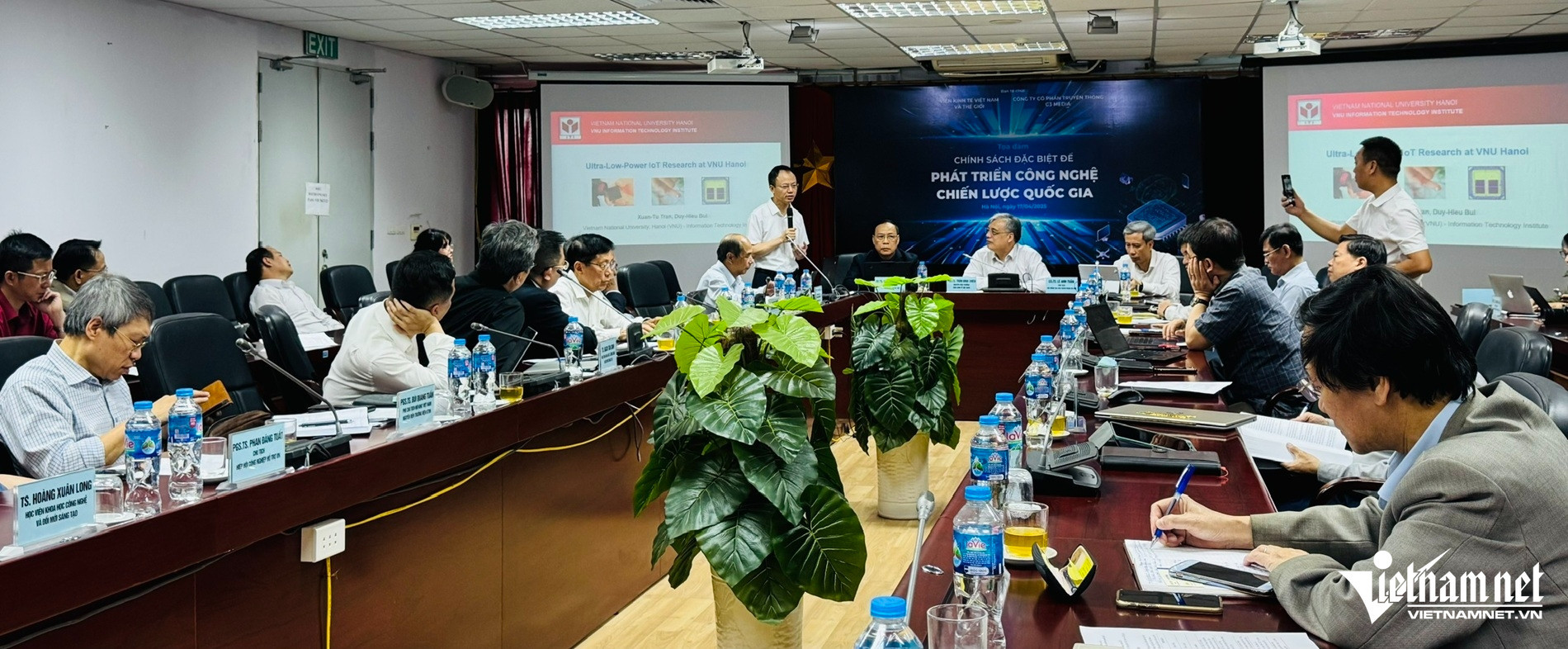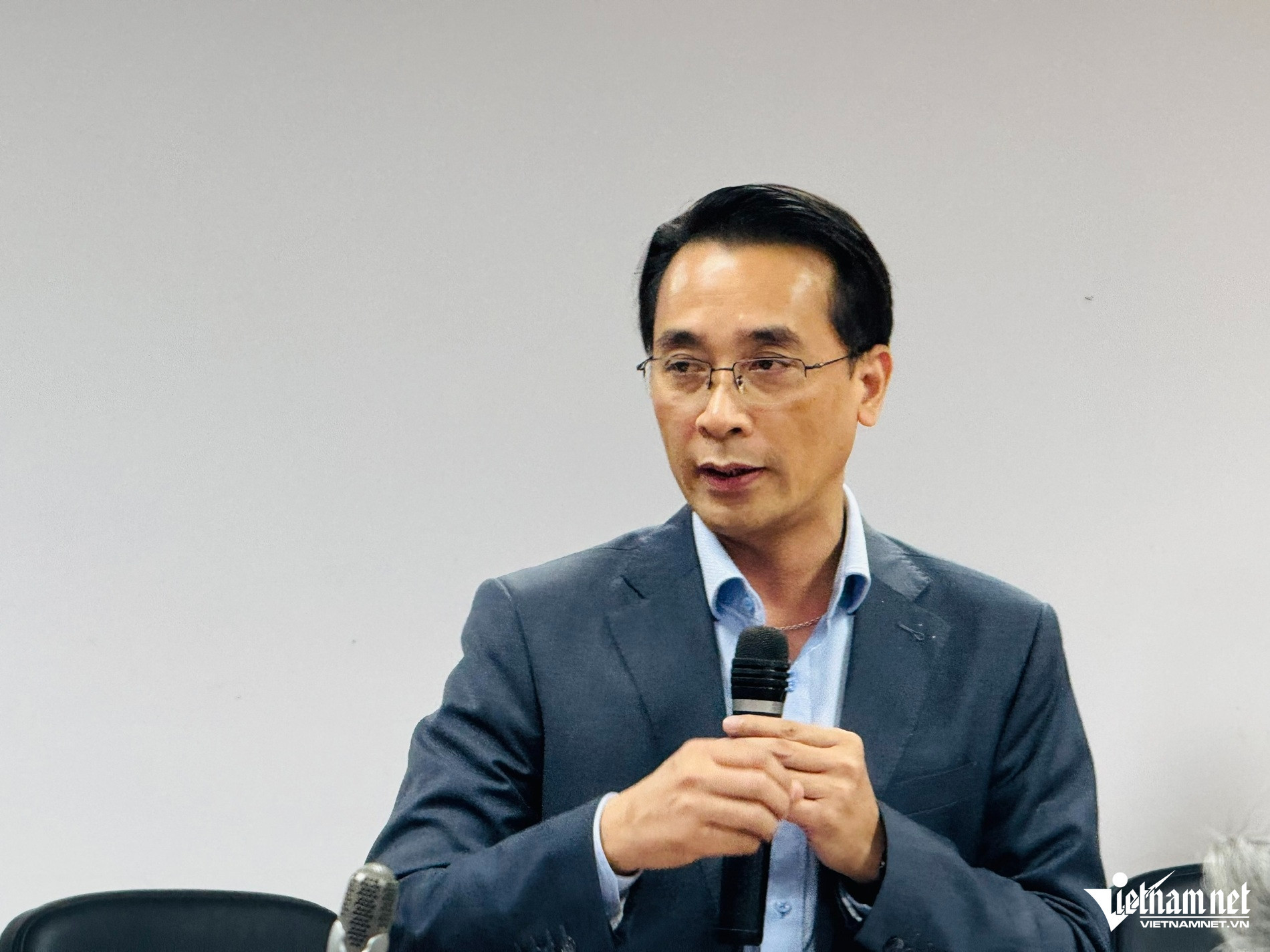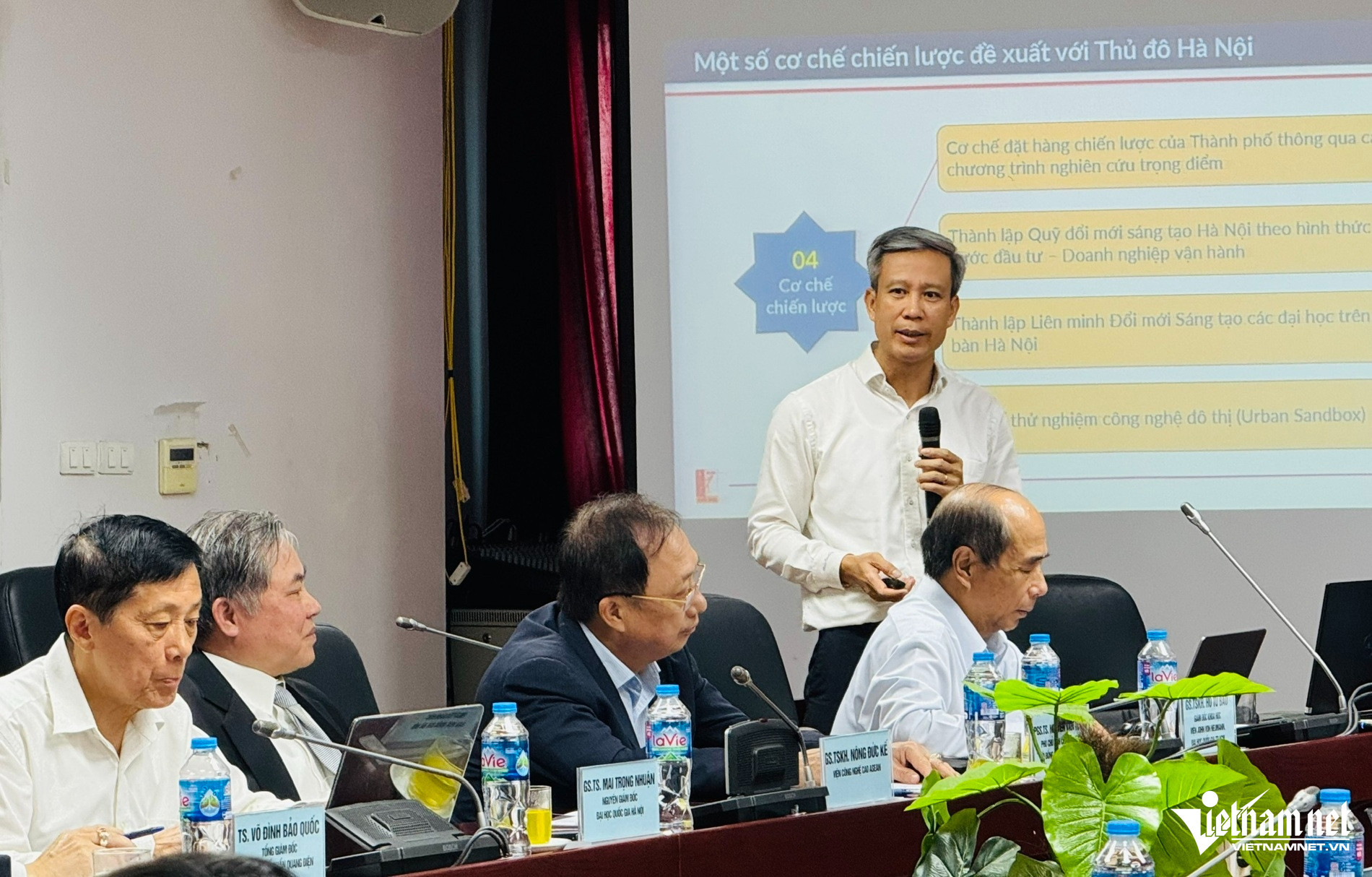Vietnam is facing a significant opportunity to join the global value chain in the semiconductor industry - a high-tech sector often referred to as the "backbone" of the digital economy.
Experts have put forward strategic directions, from the development of specialized chips to the establishment of an innovation ecosystem, aiming to position Vietnam as an attractive destination in this industry.
Focus on mid-tier specialized chips rather than competing on cutting-edge technology

Professor Tran Xuan Tu, Director of the Institute of Information Technology and Semiconductor, Vietnam National University in Hanoi, proposes that Vietnam focus on the open-source RISC-V architecture. Photo: Du Lam
At the seminar "Special policy for the development of national strategic technology" on April 17, leading scientists and experts emphasized that Vietnam should steer its semiconductor industry toward developing mid-tier, specialized chips - such as those used in telecommunications, citizen ID cards, IoT devices, or encryption - rather than racing to keep up with the most advanced technologies.
Professor Tran Xuan Tu, Director of the Institute of Information Technology and Semiconductor, Vietnam National University in Hanoi, suggested that Vietnam could focus on processors based on the open-source RISC-V architecture, similar to China. This approach would reduce dependence on proprietary, closed-source technologies from foreign countries.
According to him, semiconductors are an extremely advanced technology field, and gaining market acceptance is not easy. He recommended a simple yet impactful solution: establishing an IP bank dedicated to Vietnamese-designed chips, allowing them to be shared for free or at very low cost.
Such a bank would support research groups while enabling contributors to receive user feedback for continued improvement. "Once widely applied in various projects, commercialization will be much easier," he said.
He also emphasized the need for a semiconductor fabrication facility - regardless of its scale - for national defense and security purposes, with a focus on advanced packaging technologies.
Reality shows that companies like FPT Semiconductor have begun designing chips for IoT applications, while Viettel provides chips for 5G networks.
Professor Chu Duc Trinh, Rector of the University of Engineering and Technology, Vietnam National University in Hanoi, said: “Semiconductors are a very open field, but only for skilled organizations, talented individuals, and those with strong technological capabilities. To achieve the dream of a prosperous and powerful nation, our products must first succeed in global markets.”
Breakthrough mechanisms and an innovation ecosystem

Professor Chu Duc Trinh, Rector of the University of Engineering and Technology, Vietnam National University in Hanoi, speaks at the seminar. Photo: Du Lam
To realize its potential, Vietnam needs strategic policies and strong collaboration among the government, businesses, and research institutes.
Professor Le Anh Tuan, Chairman of the Hanoi Polytechnic Council, proposed that the city implement a mechanism for placing priority research orders; establish an innovation fund with state investment and business operation; and form an innovation alliance among universities.
He highlighted the crucial role of large corporations - who have significant demand for semiconductor chips - in supporting laboratories and infrastructure. “We need a mechanism to mobilize financial resources from society and businesses, combined with intellectual resources from universities and research institutes.”
Regarding the ecosystem, Professor Tran Xuan Tu suggested creating a shared equipment center among universities to reduce costs for expensive tools. “If each unit tries to invest in lithography machines and manufacturing devices, the state budget won't be able to keep up,” he warned.
He also called for flexible policies to facilitate collaboration with scientists both domestically and internationally, noting that organizing international conferences currently takes 5 to 6 months due to complicated procedures.

Moreover, he said it's vital to identify which technologies enterprises will adopt in the next 5 to 10 years and use that information to guide investment in science and technology, particularly at research institutes and universities.
This would foster closer links between academia and industry while ensuring that businesses will have access to expert talent when rolling out new technologies.
From a business perspective, Dr. Vo Dinh Bao Quoc, CEO of Quang Dien Corporation, recommended that Vietnam study how Malaysia established its free trade zone in 1972 to attract semiconductor investment.
Vietnam’s semiconductor industry should also target technologies that are being forced to relocate from traditional manufacturing hubs due to geopolitical tensions.
To attract long-standing supply chains to Vietnam, a multi-faceted approach is needed, involving diplomacy, economic security, tariff policies, and lobbying efforts.
With clear direction and strong cooperation among the government, businesses, and research institutions, Vietnam has the potential to make a breakthrough in the semiconductor industry and climb the global value chain.
Du Lam